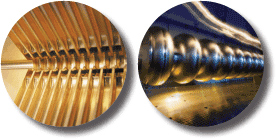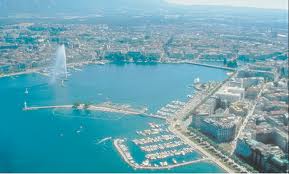Director's Corner
16 September 2010
 Barry Barish |
IWLC2010: International Workshop on Linear Colliders 2010
This week I want to preview the coming ECFA-CLIC-ILC joint meeting that will be held from 18 October through 22 October 2010 at CERN and the International Conference Centre Geneva, Switzerland. This meeting is one further step towards bringing the Compact Linear Collider (CLIC) Study and ILC efforts closer together. Over the past two years, we have established a joint set of ILC and CLIC technical working groups, have established representation in each other's executive or steering committees, created a new joint general issues group and now will have a major joint workshop. This healthy development will enable our two overlapping communities to interact in a meaningful way, while at the same time carrying out each projects' major work.
There will be plenary sessions both on the first and the last day. The opening plenary will be held at CERN and will address the physics, the ILC and CLIC efforts in broader context and the progress, challenges and plans for both projects for both the accelerator and detectors. This will set the stage for the workshop part of the programme and the final plenary, also at CERN, will both summarise the detailed progress at this workshop and address the future plans towards a linear collider construction programme.
In ILC NewsLine this week, Francois Richard is separately addressing the physics and detector plans for this workshop, while I summarise here the accelerator working group organisation.
The aims of the Accelerator Working groups at IWLC2010 are:
- to review the status and adequacy of the scientific and technical studies towards the CLIC conceptual design and the ILC technical design and to identify remaining issues
- to review preparation for the development of the CLIC CD and ILC TD cost estimate, including component counts and industrialisation plans, and make recommendations for further studies
- to contribute to a comprehensive discussion of R&D status and needs beyond that ongoing for the above design work, including proposals for future work
- to foster the ILC-CLIC collaboration on topics of common interest
Additionally, and specifically for the ILC-GDE working groups:
- to review the technical developments for the proposed top-level reference design baseline changes and provide input to the ongoing baseline assessment process
The working groups will take place on Wednesday and Thursday for the full day. Summaries will be presented on Friday morning.
The list of working groups and conveners is the following:
This workshop represents the midpoint in the Technical Design Phase for the ILC, which will lead to a Technical Design Report (TDR) and Project Implementation Plan (PIP) by the end of 2012. The ILC R&D programme has been quite productive during this phase, including reaching our major milestone of producing ILC-type 9-cell SCRF cavities with a yield of 50 percent reaching 35 megavolts per metre; as well as substantial progress and results both from our electron cloud R&D at Cornell and final focus tests at the KEK Accelerator Test Facility 2 (ATF2) KEK. We are also in the final stages of assessing and making decisions on the proposed changes to the ILC baseline to be used for the TDR design. This is a very good time to hold a workshop where we take stock of our status and plan the next phase to the TDR.
The venue of the meeting, CERN and Geneva, will provide both for an opportunity for the ILC and CLIC communities to learn from each other and to work together on joint problems. In addition, we will be close to the large community of experimentalists, who are so intensively involved in the first running, data and science from LHC. We hope that our friends in the LHC community will take the time to attend our plenary sessions at CERN, where we will be addressing the potential of a lepton collider to provide complementary exploitation of the science of the Terascale.
-- Barry Barish

